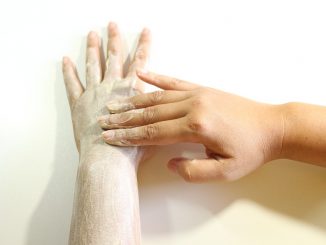
Anxiety disorders include a number of problems, divided in different categories: generalized anxiety, social phobia, specific phobias (eg insect phobia, fear of open or closed spaces), panic attacks, obsessive-compulsive disorder and post-traumatic stress.
Anxiety is a very common problem in everyday life. Approximately 25% of the population suffer from a type of anxiety that would require treatment during a certain period of their life. Another 25% have less severe anxiety disorders (such as fear of mice or spiders).
The Difference Between Anxiety And Fear
Each of us has experienced intense fear at some point, which is a normal human emotion which is meant to help us deal with danger. However, some people experience a very intense and irrational fear that is not justified by the presence of a dangerous situation.
An anxious person continues to feel a permanent restlessness that interferes with his everyday life. It may indicate the presence of anxiety disorder. Summing up the above, the anxiety felt by a person is a very intense fear, unjustified by a real danger.
Symptoms of Anxiety Disorders
The main symptoms are the feeling of fear and / or constant racing thoughts, that represent a stress element for the person and interfere with his daily activities (for example if a person is afraid to go to interviews because there should interact with strangers, they will avoid that situation, fearing that no matter how intelligent they might be, they would not get the job, even if they aren’t happy with their current situation).
Other symptoms common to all types of anxiety:
- Physical reactions, like sweating, trembling, rapid heart beat, difficulty breathing, nausea, fainting.
- Dysfunctional thoughts – Such as “If I’m going to talk to the public, and I’m going to make a mistake, everyone will just believe I’m stupid”.
- Avoidance behavior – An anxious person will usually avoid a lot of situations. Their negative thoughts and irrational assumptions on the situations that cause him anxiety, the strong physical reactions and possibly negative experiences can place the person in a vicious circle from which he cannot get out.
Types of Anxiety Disorders
Generalized anxiety
Characterized by the exaggerated fear and concern about common things. The center of anxiety can be represented by friends, family, health, work, money, or missing an important meeting.
Generalized anxiety should be taken into consideration if exaggerated care and overthinking is noticed in almost every day for 6 months, and if the person has difficulty controlling his anxiety levels.
In addition, the patient might notice one or more of the following symptoms:
- Irritability
- Fatigue
- Insomnia
- Concentration issues
Social phobia
Consists of the fear of the assessment and negative judgment of other people. That’s why people with social phobia are afraid to do something that could humiliate them in front of the public – public speaking, use public restrooms, eating or drinking in public, or any other social situation including parties and the work environment. Those who suffer from social phobia can experience fear in one or multiple situations such as the ones we mentioned. This fear can lead to the avoidance of those situations, which can then lead to isolation.
Specific phobias
A person with a specific phobia feels a persistent and irrational fear of a specific object or situation. Fear may occur with certain animals or insects, places or people, and may be so intense that the person will experience intense physical symptoms or even a panic attack.
These phobias can relate to dogs, blood, storms, spiders, needles, or other objects and situations. Adults suffering from phobias are usually aware that their fear is exaggerated and irrational. In any case, their need to avoid the subject, the situation or the person underlying the fear can restrain their lives.
Panic disorder
Panic attacks are fairly common among people, compared to panic disorders that are less common. Panic attacks may not be related to a particular situation, but can occur spontaneously. In order for a person to be diagnosed with panic disorder, he or she must experience about 4 panic attacks or more each month over a longer period of time. This disorder can be diagnosed if the panic attacks are frequent and there is also intense and persistent fear of another panic attack.
Obsessive-compulsive disorder (OCD)
People who have this disorder experience intrusive thoughts or involuntary and unwanted impulses (obsessions). At the same time, they feel compelled to perform mental and behavioral rituals, excessive washing of hands, overly frequent showers (several times a day), or repetitive checking of certain things (such as if the door has been locked). They are usually aware of the irrationality and excessive nature of their behaviors or thoughts.
Post-Traumatic Stress Disorder (PTSD)
This disorder appears after an extremely traumatic event. The event may be recent (a car accident, physical abuse) or may have happened in the past (such as sexual abuse in childhood).
The reactions of suffering, shock and anger are normal reactions after traumatic events. People with PTSD have severe, prolonged and intrusive reactions that dramatically affect their daily lives. These can include thoughts or intrusive imagery about the traumatic situation, which are just as or even more stressful than the original event. People usually start to avoid situations or events that remind them of trauma, including places and similar situations.



Leave a Reply